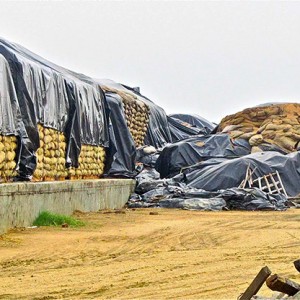California Drought – Town Hall – What is the New Normal?
California Drought Responses Must Feed Water Strategy Long-Term

The drought emergency could be a cauldron for new water management ideas and practices, according to a panel of experts.
An increasingly acute social and ecological disaster, California’s drought emergency is an opportunity for officials, regulators, and managers to rethink a complex system of water rights, groundwater wells, reservoirs, and canals that move water hundreds of miles across desert valleys and over mountains. The four-year drought is also a cautionary tale for a warming world in which water for food, people, and the environment is less assured than ever before.
These are some of the conclusions from a pair of interactive webinars hosted by Circle of Blue on April 1 and April 2. More than 200 people from business, government, and academia as well as environmental groups and concerned citizens participated in the calls, which featured elected county officials, regional water managers, and state and national experts.
“We have a laser focus on California right now,” said Brian Stranko, the Nature Conservancy’s California water program director. “What we learn here for drought stress – for nature and for people – are lessons for the world.”
The panelists, representing multiple scales of government and expertise, described a state forced to respond both to immediate and long-term pressures. State officials are implementing the most severe water restrictions in California’s history as they juggle competing demands between farms, households, and ecosystems. Frank Mecham, of the San Luis County Board of Supervisors, portrayed the water challenge in his county as a “perfect storm” of an expansion of irrigated agriculture, a population boom, and water supplies slashed by deep drought.
At the same time, officials need to begin water policy reforms that will take decades to implement, Mecham said, referring to a trio of state laws passed last year that regulate groundwater basins for the first time.
Precise management of water resources, through thoughtful policies that are informed by careful data analysis, will take on greater urgency as California heats up. Noah Diffenbaugh, a senior fellow at the Stanford Woods Institute for the Environment, explained that climate change has worsened the current drought by increasing evaporation and that the state’s water supply challenges are expected to grow more severe in the coming decades.
“California is in a different climate now,” Diffenbaugh said. “The climate we built our infrastructure and policies around is not the climate we face now.”
The convulsive environmental changes come at a crucial pivot point, according to Upmanu Lall, director of the Columbia Water Center. Lall cited several studies that estimate the cost of replacing and upgrading America’s dams, levees, water distribution pipes, and sewage treatment facilities at more than $US 1 trillion over the next two decades. With that much money at stake, wise investments will be essential, he argued.
“These are times when it pays to think about a longer-term strategy,” Lall asserted. “California is not the only place with significant stress. Virtually everywhere [in the United States] with a large population center faces stress.”
With stress and financial need comes opportunity, Lall said: “Suppose we are starting new – and we are if we’re spending that much money – what are the things that we would do differently?”
Recycled water, Lall noted is a new source of supply that costs significantly less than removing the salt from seawater. Orange County’s globally lauded water recycling facility is a showcase example of the technology and collaborative partnerships that will define the next era of water supply.
Heather Cooley, the water program director at the Pacific Institute, said that additional investments can be made to ensure that each drop of water – in the home, at the chemical plant, and on the farm – is as productive as possible. Farmers can install drip irrigation that delivers sips of water to a plant’s roots. Cities, instead of channeling stormwater out to sea, can direct the flow into groundwater basins.
“We have a tremendous opportunity to use water more efficiently in homes and businesses,” Cooley said. “Half of residential water use is outdoors. There’s a new recognition that large lawns are inappropriate. That’s a trend we’ll see more of.”
Audio of April 1st Call
Audio of April 2nd Call



